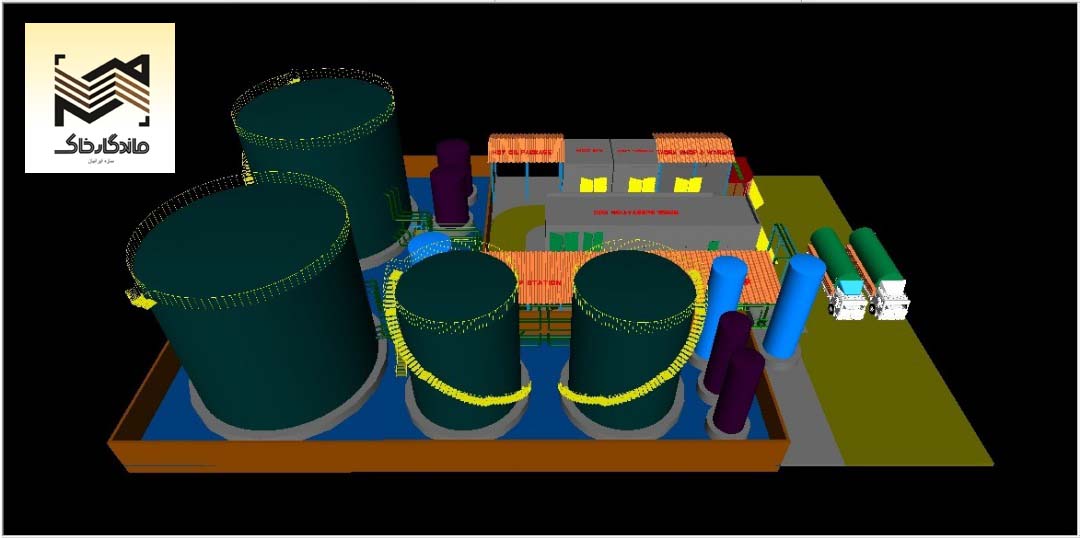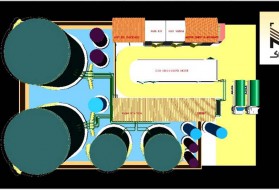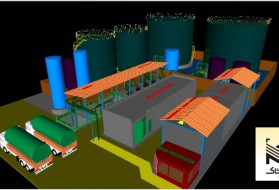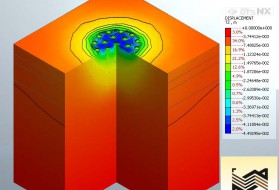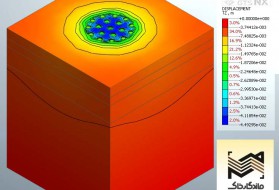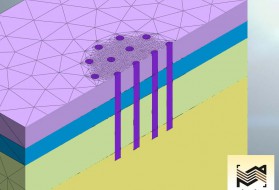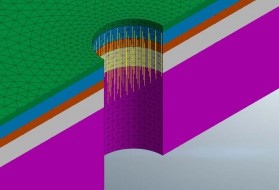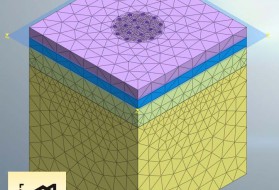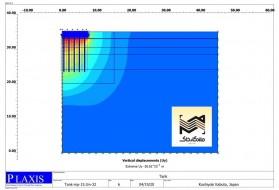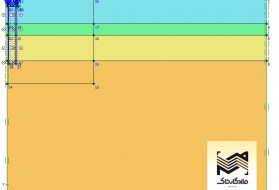پروژه کارخانه تولید قیر امولسیون، در بندر قدیمی شهر سویق عمان قرار گرفته است که برای ساخت آن، نیاز به 10 عدد مخزن با قطرهای 15.3، 9.1، 3.6 و 2.5 متر به ترتیب با ارتفاعهای 13.5، 11.2، 3 و 9.8 متر جهت ذخیره قیر، سوخت، روغن، آب و ... می باشد. موقعیت کارخانه در قسمتی از این بندر درنظر گرفته شد است که طی خاکریزی در دریای عمان، در ساحل پیشروی شده است. طی مطالعات ژئوتکنیک صورت گرفته مشخص گردید که تا عمق تقریبی 5 متر، لایه خاک دستخورده ماسه ای با مقادیر SPT کمتر از 25 وجود دارد که از ظرفیت باربری بسیار کمی برخوردار می باشد و پس از این لایه، خاک با طبقه بندی یونیفاد CL می باشد که از عمق 11 متر نیز دارای مقادیر SPT بیش از 50 می باشد در حالیکه تراز آب زیرزمینی نیز در 2 متری سطح زمین واقع شده است.
با توجه به قابل اشتعال بودن مواد اولیه این کارخانه، تغییرشکل پس از ساخت مخازن و تاسیسات آنها ، دارای حساسیت ویژه ای می باشد. لذا، با محاسبه تغییرشکل های آنی و تحکیمی هر یک از مخازن، قرار شد برای مخازنی که تغییرشکلهای احتمالی بیش از حد مجاز می باشند، پیشنهاد بهسازی خاک مربوطه ارائه گردد.
با بررسی امکانات و تجهیزات شرکتهای پیمانکاری فعال در کشور عمان و با توجه به بالا بودن تراز آب زیرزمینی، گزینه های بهسازی خاک شامل اجرای شمع DSM، CFA و Micropile انتخاب گردیدند. با توجه به محدودیت های اقتصادی کارفرما، هر 3 گزینه بصورت کامل طراحی گردیدند برآورد مربوطه و تعداد و نوع آزمایش های QC جهت استعلام قیمت از پیمانکاران فعال در کشور عمان به کارفرمای پروژه ارائه گردد. لازم به ذکر است که هر یک از این روشها دارای معایب و مزایای خاص خود می باشند. در همه روش های بهسازی خاک اشاره شده در بالا، با درنظر گرفتن پی گسترده صلب، تحلیل ها و مدلسازی های عددی 2 و 3 بعدی به روش المان محدود به نحوی صورت گرفت که بدون نیاز به خاکبرداری و یا حذف خاک ماسهای سست، تغییرشکلهای آنی و تحکیمی هر مخزن در محدوده مجاز قرار گرفتند و همچنین اثر گروه شمع نیز در کاهش ظرفیت باربری و نشست احتمالی کنترل گردید.
The Soil Improvement of Oman Bitumen Project
The project of the emulsion bitumen plant is located in the old port of Suwayq, Oman. To build this factory, 10 tanks with diameters of 15.3, 9.1, 3.6 and 2.5 meters with heights of 13.5, 11.2, 3 and 9.8 meters, respectively, are needed to store bitumen, Fuel, oil, water, etc. The plant is situated on a location of the port that has been progressed on the coast by deploying soil on the Oman Sea. Geotechnical studies have demonstrated there is a loose sandy soil layer with SPT values less than 25 until the depth of 5 m, which has a very low bearing capacity.After this layer, the soil layer is classified as CL which has SPT values of more than 50 at the depths over 11 meters. It is worthy to mention that the groundwater level is at 2 m.
Regarding the flammability of the raw materials of this factory, the post-construction deformation of the tanks and their facilities, has a special importance. Therefore, by calculating the instantaneous and consolidated deformations of each of the reservoirs, it was decided to present a soil improvement method for the reservoirs that their potential deformations are greater that allowable values.
By surveying the capability and equipment of active geotechnical contractor companies in Oman and considering the high groundwater level of the project site, soil improvement options including DSM, CFA and Micro piles were selected. Due to the economic limitations of the employer, all the mentioned methods were designed to provide the relevant estimation and also the number and type of QC tests to inquire about the price from the active contractors in Oman. It should be noted that each of these methods has its own disadvantages and advantages. Considering a rigid mat foundation in all of these methods, 2D and 3D numerical finite element analysis were performed to limit the instantaneous and consolidation deformations of each reservoir without the any excavation or removal of loose sandy soil layer. Meanwhile, the effect of the pile group was checked due to reduction of load capacity and increase of possible deformations

